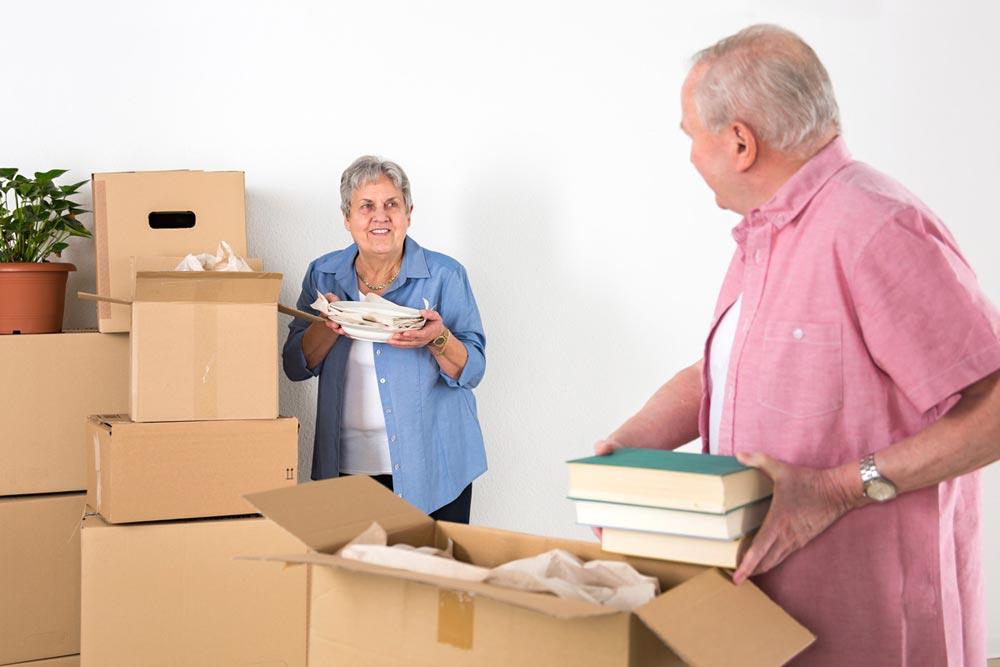Rod Anderson-Executive Director, Bridges Senior Lifestyle Living
The prospect of downsizing can be a difficult one for seniors facing the move to independent living. A lifetime of memories associated with possessions can be daunting to wade through.
Downsizing is an inevitable part of moving to a new residence: taking old clothes to Goodwill, throwing away that leaf blower that hasn’t worked in five years, and getting rid of all the things you’ve accumulated that your family no longer needs. But, downsizing can be particularly wrenching for seniors, who may find it overwhelming to think about letting go of the items you’ve gathered over a lifetime. If you are considering a move to independent living where they may have a little less storage space, that clutter in your closet may turn into a stubborn roadblock – or even a justification to resist moving.
Don’t let the thought of packing and moving 40 years worth of memories overwhelm you. Here are some tips for accomplishing what always seems like an impossible task.
- Replace ‘Downsizing’ with Right-Sizing”
The term ‘downsizing’ implies getting rid of everything that has been important to you for years, try using the term ‘right-sizing’ instead. Right-Sizing your possessions to fit your current lifestyle means keeping the things that are important and useful to you now and letting go of things that may have been important years ago but are no longer needed.
- Avoid tackling the whole house in one go.
Though it’s more efficient for you to plow full steam ahead, you may feel stressed emotionally, if not also physically. When organizing a move, it’s better to think in terms of months, not days. Tackle one room or area at a time. About two hours at a stretch is ideal for many older adults, says Margit Novack, president of Moving Solutions in Philadelphia and founding president of the National Association of Senior Move Managers.
- Banish the “maybe” pile.
Relocation experts call it the OHIO rule: Only handle it once. The less decisive you are about what to do with an item, the more attached you risk becoming to it. Moving things in and out of “maybe” piles also takes time. Tempting as it is to set aside tough sorts for later, unless there’s room to “hold” them at a relative’s house, it’s not generally worth paying storage-rental fees (unless it’s a very large estate and time is tight). That’s because once they’re boxed, you are less likely to look at the items ever again (out of sight, out of mind.) Exception: Save time by boxing piles of old paperwork. Sorting through old papers is time-consuming and is often an unpleasant task, casting a pall on your packing.
- Focus on most-used items (and let the rest go).
“Don’t go by the newest and best; go by what you use,” Novack says. “Your loved ones may think you should pack your pretty cut-glass tumblers for independent living, but the reality is that those old plastic ones are what you use every day.”When facing especially hard choices, think of the story behind an object — where it came from, when it was last used, whether a young family might put it to good use. This takes time, but will pay off in the end giving you a clearer perspective and help to make you feel more comfortable letting go, Novack says.
- Cull a collection by asking yourself, “Which is my favorite piece?”
Set aside a special location in your new home for that one or two “best” items in a collection. Take photos of the rest of a collection and keep them in a special book. No, it’s not exactly the same as owning, but it’s a space-saving way for a collector to continue enjoying. Pass along the rest to an interested family member of another collector you know for them to enjoy and appreciate.
- If it’s meant to be a gift or legacy, consider giving it now.
Don’t wait for the next holiday, birthday, or other milestone to bestow a gift, why not enjoy the feeling of giving right now? Write a note with the item and explain how you acquired it and why you would like the recipient to have it, the how and why of a piece can turn even the simplest item into a cherished gift for a loved one
- Consider bringing in the pros.
A fast-growing specialty, senior move managers specialize in helping older adults and are skilled at both the emotional and practical dimensions of late-life transitions. (The ten-year-old National Association of Professional Move Managers has more than 600 move-management company members.) These experts can help with handling everything from sorting and packing through hiring movers and unpacking in the new place. They usually charge an hourly fee that varies by locale.
Leaving a home you spent a lifetime building, furnishing and maintaining and parting with some of your possessions can feel like you are losing a part of your identity. A little right-sizing will help to ease your fears of losing yourself in the move and embrace an exciting new life in an independent living community.

